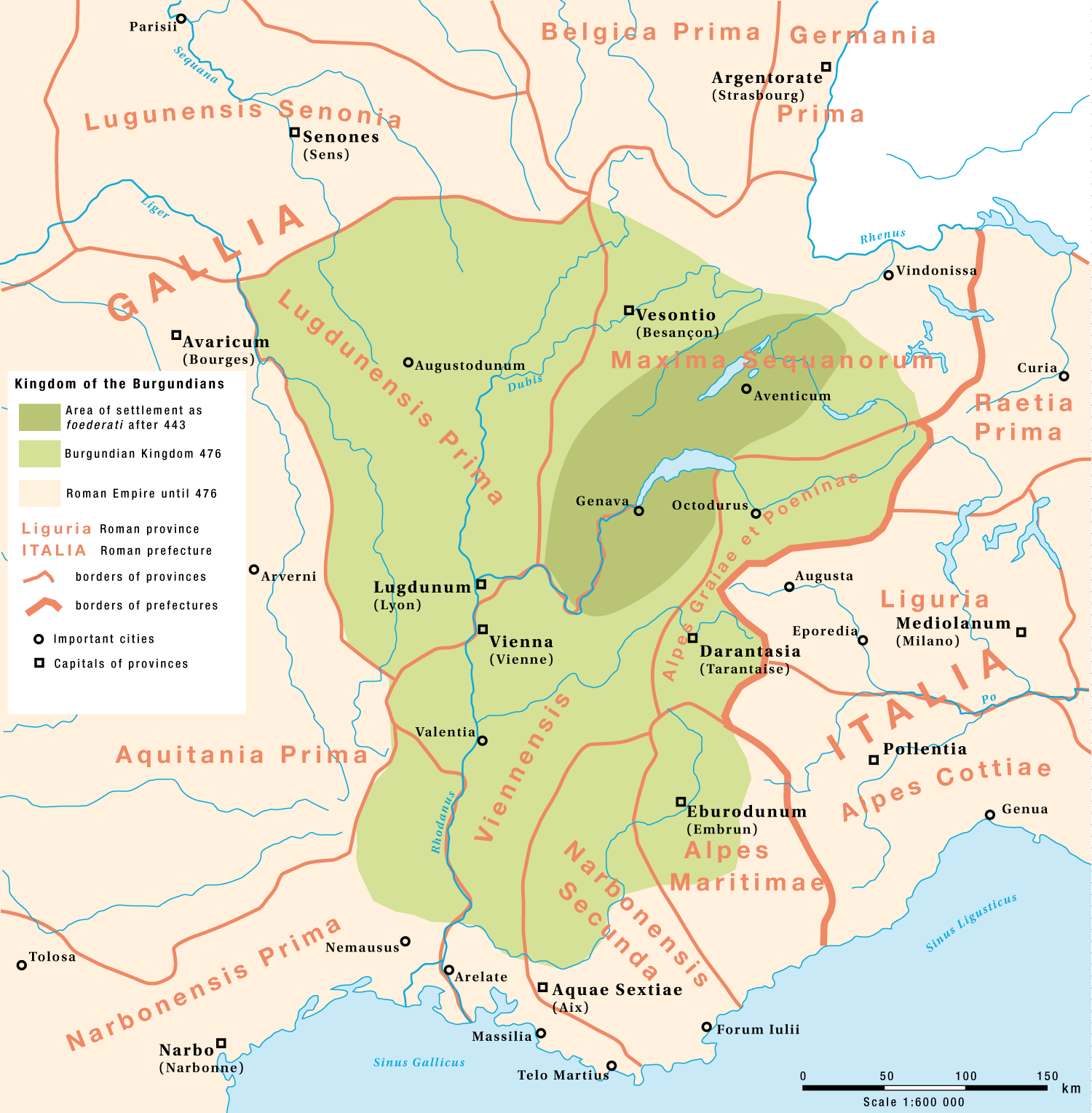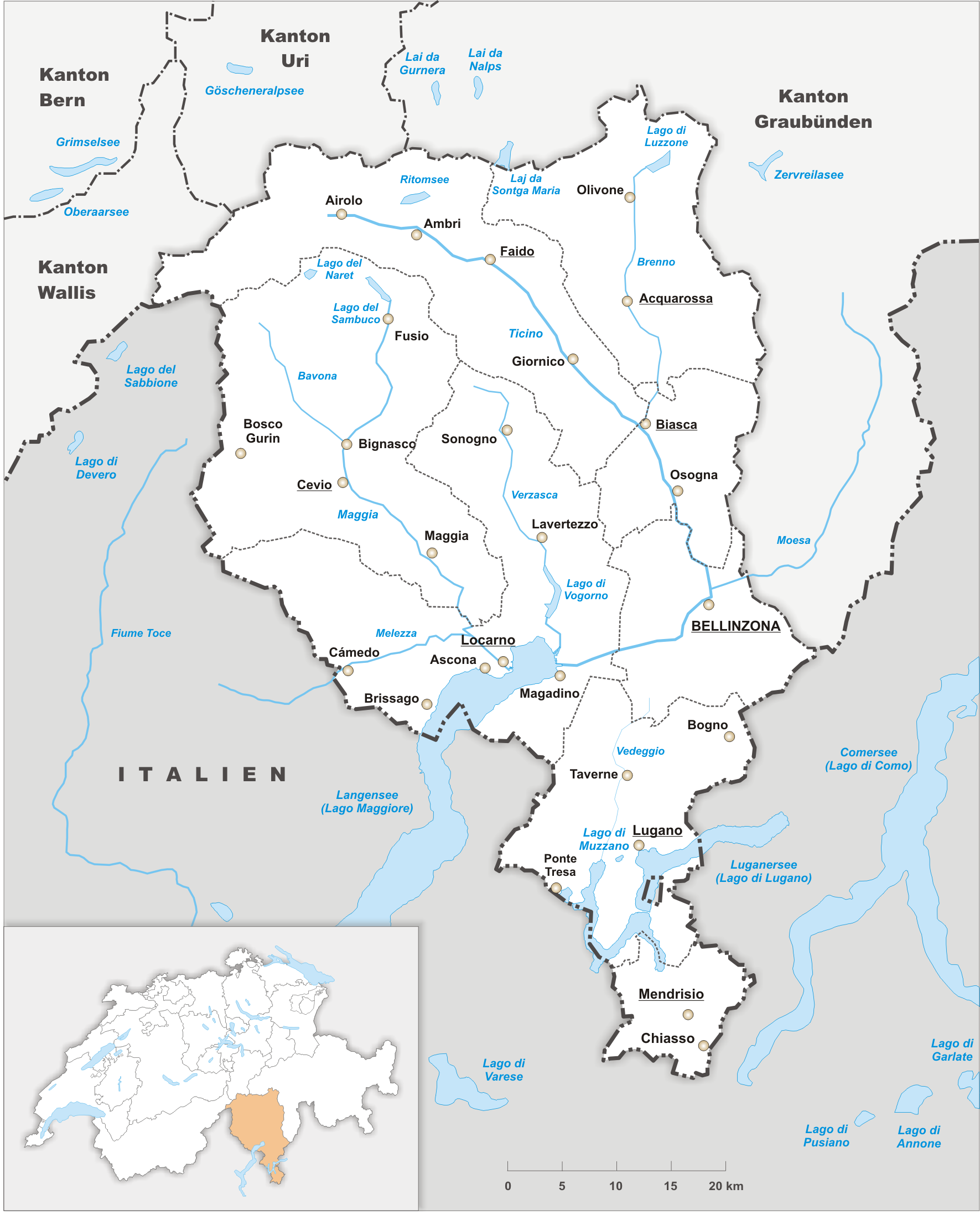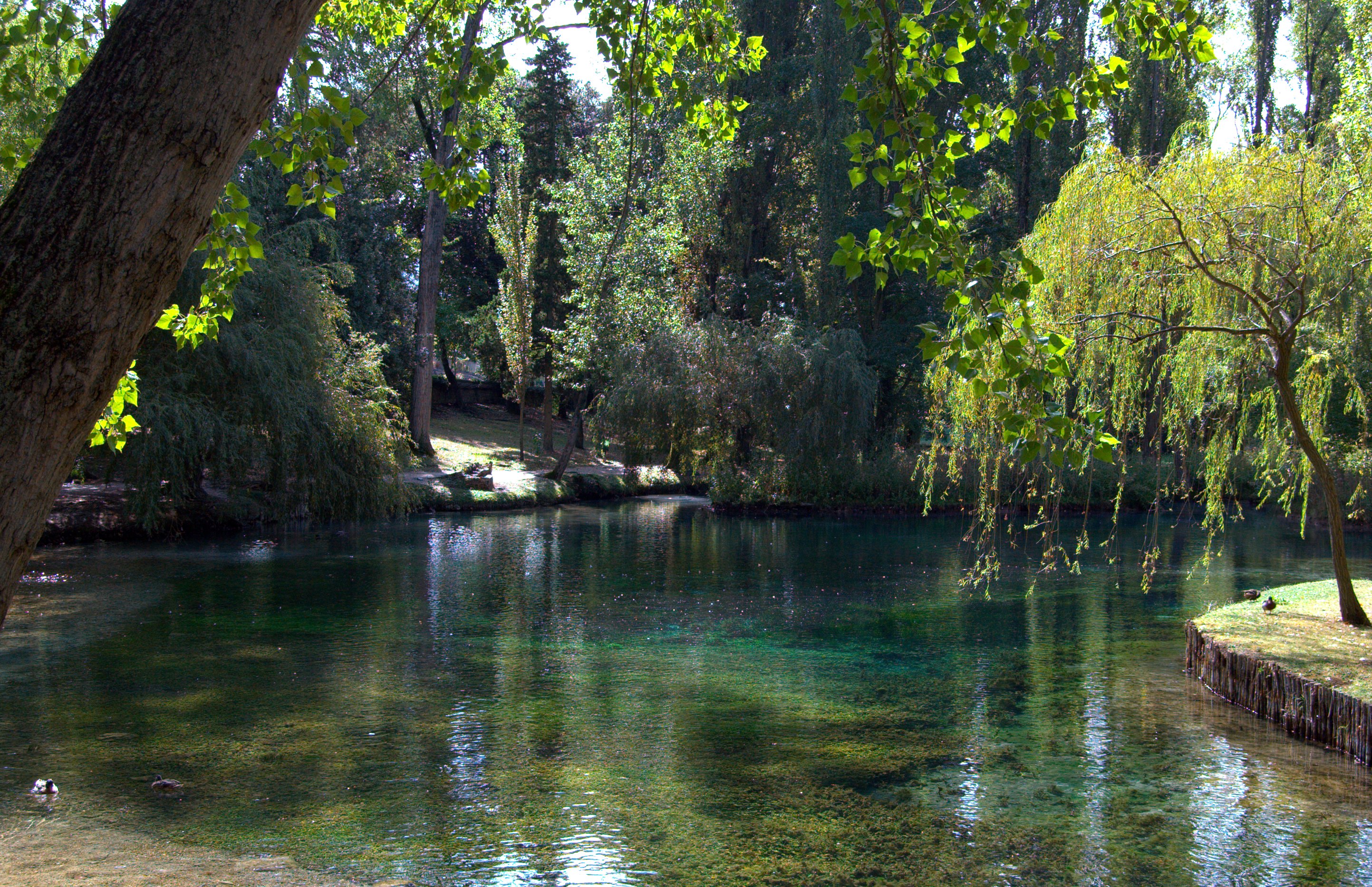|
Battle Of Spoleto
The Battle of Spoleto took place in 940 between the forces of the count of the palace Sarlio and those of Duke Anscar of Spoleto. Sarlio had been paid by King Hugh to cause unrest in Spoleto, to give cause for the removal of Anscar. Liutprand of Cremona is the only source for the battle and he specifies neither the day nor the place. Perhaps exceeding his instructions, Sarlio moved on an unspecified city, probably Spoleto, with six ''acies'' (units, literally "spearheads") of experienced troops. Since Anscar had only one unit (''acies'') available at the time, his standard-bearer, Wikbert, advised him to remain in the city. He initially took the advice and sent messengers for reinforcements, but a certain Arcod—who is described as a Burgundian, like Sarlio—pressure him into assaulting Sarlio's camp. The attack was premature. Anscar personally led his ''acies'' in a charge, while Sarlio countered with only three of his ''acies''. Sarlio himself led from the rear, watching the ... [...More Info...] [...Related Items...] OR: [Wikipedia] [Google] [Baidu] |
Count Of The Palace
Count (feminine: countess) is a historical title of nobility in certain European countries, varying in relative status, generally of middling rank in the hierarchy of nobility. Pine, L. G. ''Titles: How the King Became His Majesty''. New York: Barnes & Noble, 1992. p. 73. . The etymologically related English term "county" denoted the territories associated with the countship. Definition The word ''count'' came into English from the French ''comte'', itself from Latin ''comes''—in its accusative ''comitem''—meaning “companion”, and later “companion of the emperor, delegate of the emperor”. The adjective form of the word is "comital". The British and Irish equivalent is an earl (whose wife is a "countess", for lack of an English term). In the late Roman Empire, the Latin title ''comes'' denoted the high rank of various courtiers and provincial officials, either military or administrative: before Anthemius became emperor in the West in 467, he was a military ''comes ... [...More Info...] [...Related Items...] OR: [Wikipedia] [Google] [Baidu] |
Sarlio Of Spoleto
Sarlio was the Duke of Spoleto from 940 until 943. He was originally from Kingdom of Provence, Provence and served as a Palatine count, count of the palace under King Hugh of Italy, Hugh. According to Liutprand of Cremona, the king gave money to Sarlio to raise opposition to Duke Anscar of Spoleto. Sarlio married the widow of the previous duke, Theobald I of Spoleto, Theobald I, a nephew (''nepos'') of Hugh's, and obtained information and followers in Spoleto. At a date unspecified, Sarlio raised a revolt against Anscar, who left the city of Spoleto to engage him in the battle of Spoleto. Although Sarlio did not enter the battle personally, his troops were victorious and Anscar was killed. In 941 Hugh took several monasteries in the march of Tuscany and the march of Fermo, including the abbey of Farfa, and gave them to Sarlio, who took the title "rector of the Sabina (region), Sabina" according to the ''Chronicon Farfense''. In 943, Hugh forced Sarlio to retire to a monastery—accu ... [...More Info...] [...Related Items...] OR: [Wikipedia] [Google] [Baidu] |
Anscar Of Spoleto
Anscar (Italian ''Anscario''; died 940) was a magnate in the Kingdom of Italy who served as Count of Pavia (c. 924–29), Margrave of Ivrea (929–36) and Duke of Spoleto (936–40). He is sometimes numbered "Anscar II" to distinguish him from his grandfather, Anscar I of Ivrea. Described by Liutprand of Cremona as courageous and impulsive, he died in the battle of Spoleto. Family Anscar was a member of the Anscarid dynasty, a younger son of Margrave Adalbert I of Ivrea by his second wife, Ermengarde of Tuscany, a daughter of Adalbert II of Tuscany by his second wife, Bertha. He was a nephew of King Hugh in two ways. He was married to Willa, daughter of Margrave Boso of Tuscany, Hugh's brother, and thus Hugh's nephew by marriage. His maternal grandmother was also Hugh's mother. According to Valerie Eads, he was born around 915, a date at odds with Margherita Bertolini. There is no reliable record of Anscar fathering any children. He is most likely the father of one Amadeus of M ... [...More Info...] [...Related Items...] OR: [Wikipedia] [Google] [Baidu] |
Hugh Of Italy
Hugh (c. 880–947), known as Hugh of Arles or Hugh of Provence, was the king of Italy from 926 until his death. He belonged to the Bosonid family. During his reign, he empowered his relatives at the expense of the aristocracy and tried to establish a relationship with the Byzantine Empire. He had success in defending the realm from external enemies, but his domestic habits and policies created many internal foes and he was removed from power before his death. Early life Hugh of Arles was born in 880/1, the eldest surviving son of Count Theobald of Arles and Bertha of Lotharingia. By inheritance, he was count of Arles and Vienne, which made him one of the most important and influential nobles in the Kingdom of Provence. After Emperor Louis III was captured, blinded, and exiled from Italy in 905, Hugh became his chief adviser in Provence and regent. By 911, most of the royal prerogatives were exercised by Hugh and Louis ceded him the titles ''dux'' of Provence and ''marchio'' of ... [...More Info...] [...Related Items...] OR: [Wikipedia] [Google] [Baidu] |
Liutprand Of Cremona
Liutprand, also Liudprand, Liuprand, Lioutio, Liucius, Liuzo, and Lioutsios (c. 920 – 972),"LIUTPRAND OF CREMONA" in ''Oxford Dictionary of Byzantium, The Oxford Dictionary of Byzantium'', Oxford University Press, New York & Oxford, 1991, p. 1241. was a historian, diplomat, and Bishop of Cremona born in northern Italy, whose works are an important source for the politics of the 10th century Byzantine Empire, Byzantine court. Early life and career Liutprand was born into a prominent family from Pavia, of Lombards, Lombard origins, around 920. In 931 he entered service as page to Hugh of Arles, who kept court at Pavia as King of Italy and who married the notorious and powerful Marozia of Rome. Liutprand was educated at the court and became a Deacon at the Cathedral of Pavia. After Hugh died in 947, leaving his son and co-ruler Lothair on the throne as King of Italy, Liutprand became confidential secretary to the actual ruler of Italy, Berengar II of Ivrea, Berengar II, marchese d ... [...More Info...] [...Related Items...] OR: [Wikipedia] [Google] [Baidu] |
Spoleto
Spoleto (, also , , ; la, Spoletum) is an ancient city in the Italian province of Perugia in east-central Umbria on a foothill of the Apennines. It is S. of Trevi, N. of Terni, SE of Perugia; SE of Florence; and N of Rome. History Spoleto was situated on the eastern branch of the Via Flaminia, which forked into two roads at Narni and rejoined at ''Forum Flaminii'', near Foligno. An ancient road also ran hence to Nursia. The ''Ponte Sanguinario'' of the 1st century BC still exists. The Forum lies under today's marketplace. Located at the head of a large, broad valley, surrounded by mountains, Spoleto has long occupied a strategic geographical position. It appears to have been an important town to the original Umbri tribes, who built walls around their settlement in the 5th century BC, some of which are visible today. The first historical mention of ''Spoletium'' is the notice of the foundation of a colony there in 241 BC; and it was still, according to Cicero ''colonia ... [...More Info...] [...Related Items...] OR: [Wikipedia] [Google] [Baidu] |
Standard-bearer
A standard-bearer, also known as a flag-bearer is a person (soldier or civilian) who bears an emblem known as a standard or military colours, i.e. either a type of flag or an inflexible but mobile image, which is used (and often honoured) as a formal, visual symbol of a state, prince, military unit, etc. This can either be an occasional duty, often seen as an honour (especially on parade), or a permanent charge (also on the battlefield); the second type has even led in certain cases to this task being reflected in official rank titles such as Ensign, Cornet and Fähnrich. Role of the standard-bearer In the context of the Olympic Games, a flagbearer is the athlete who carries the flag of their country during the opening and closing ceremonies. While at present a purely ceremonial function, as far back as Roman warfare and medieval warfare the standard-bearer had an important role on the battlefield. The standard-bearer acted as an indicator of where the position of a m ... [...More Info...] [...Related Items...] OR: [Wikipedia] [Google] [Baidu] |
Kingdom Of Burgundy
Kingdom of Burgundy was a name given to various states located in Western Europe during the Middle Ages. The historical Burgundy correlates with the border area of France, Italy and Switzerland and includes the major modern cities of Geneva and Lyon. As a political entity, Burgundy existed in a number of forms with different boundaries, notably, when it was divided into Upper and Lower Burgundy and Provence. Two of the entities, the first around the 6th century and the second around the 11th century, were called the Kingdom of Burgundy. At other times were the Kingdom of Provence, the Duchy of Burgundy and the County of Burgundy. Kingdom of the Burgundians (411–534) Burgundy is named after a Germanic tribe of Burgundians who originated in mainland Scandinavia, then settled on the island of Bornholm, whose name in Old Norse was ''Burgundarholmr'' ("Island of the Burgundians"). From there they migrated south through Germanic lands into Roman Gaul and settled in the wester ... [...More Info...] [...Related Items...] OR: [Wikipedia] [Google] [Baidu] |
Tessino
Ticino (), sometimes Tessin (), officially the Republic and Canton of Ticino or less formally the Canton of Ticino,, informally ''Canton Ticino'' ; lmo, Canton Tesin ; german: Kanton Tessin ; french: Canton du Tessin ; rm, Chantun dal Tessin . is one of the 26 cantons forming the Swiss Confederation. It is composed of eight districts and its capital city is Bellinzona. It is also traditionally divided into the Sopraceneri and the Sottoceneri, respectively north and south of Monte Ceneri. Red and blue are the colours of its flag. Ticino is the southernmost canton of Switzerland. It is one of the three large southern Alpine cantons, along with Valais and the Grisons. However, unlike all other cantons, it lies almost entirely south of the Alps, and has no natural access to the Swiss Plateau. Through the main crest of the Gotthard and adjacent mountain ranges, it borders the canton of Valais to the northwest, the canton of Uri to the north and the canton of Grisons to the nor ... [...More Info...] [...Related Items...] OR: [Wikipedia] [Google] [Baidu] |
Clitumno
The Clitunno, in Antiquity the Clitumnus, is a river in Umbria, Italy. The name is of uncertain origin, but it was also borne by the river god. The Clitunno rises from a spring within a dozen metres of the ancient Via Flaminia near the town of Campello sul Clitunno, Umbria, Trevi. The spring was well described by Pliny the Younger who records his visit toward the end of the first century AD: Virgil mentions the site too in Book II of his '' Georgics'' where he celebrates ". . . the milk-white herds of the Clitumnus, those bulls that often bathed in the river's sacred stream, the noblest of the victims Romans sacrifice at their triumphs . . ." It was visited by Caligula and by the emperor Honorius. It was also celebrated as a great beauty spot by Byron and Giosuè Carducci; in the 19th century it was planted with willows, and zealously monitored for pollution. It is open today as a paying tourist attraction. The Clitunno then flows, generally north, through the east Umb ... [...More Info...] [...Related Items...] OR: [Wikipedia] [Google] [Baidu] |
Battles Of The Middle Ages
A battle is an occurrence of combat in warfare between opposing military units of any number or size. A war usually consists of multiple battles. In general, a battle is a military engagement that is well defined in duration, area, and force commitment. An engagement with only limited commitment between the forces and without decisive results is sometimes called a skirmish. The word "battle" can also be used infrequently to refer to an entire operational campaign, although this usage greatly diverges from its conventional or customary meaning. Generally, the word "battle" is used for such campaigns if referring to a protracted combat encounter in which either one or both of the combatants had the same methods, resources, and strategic objectives throughout the encounter. Some prominent examples of this would be the Battle of the Atlantic, Battle of Britain, and Battle of Stalingrad, all in World War II. Wars and military campaigns are guided by military strategy, whereas bat ... [...More Info...] [...Related Items...] OR: [Wikipedia] [Google] [Baidu] |
940s Conflicts
94 may refer to: * 94 (number) * one of the years 94 BC, AD 94, 1994, 2094, etc. * Atomic number 94: plutonium Plutonium is a radioactive chemical element with the symbol Pu and atomic number 94. It is an actinide metal of silvery-gray appearance that tarnishes when exposed to air, and forms a dull coating when oxidized. The element normally exhibi ... * Saab 94 See also * * List of highways numbered {{Numberdis ... [...More Info...] [...Related Items...] OR: [Wikipedia] [Google] [Baidu] |







